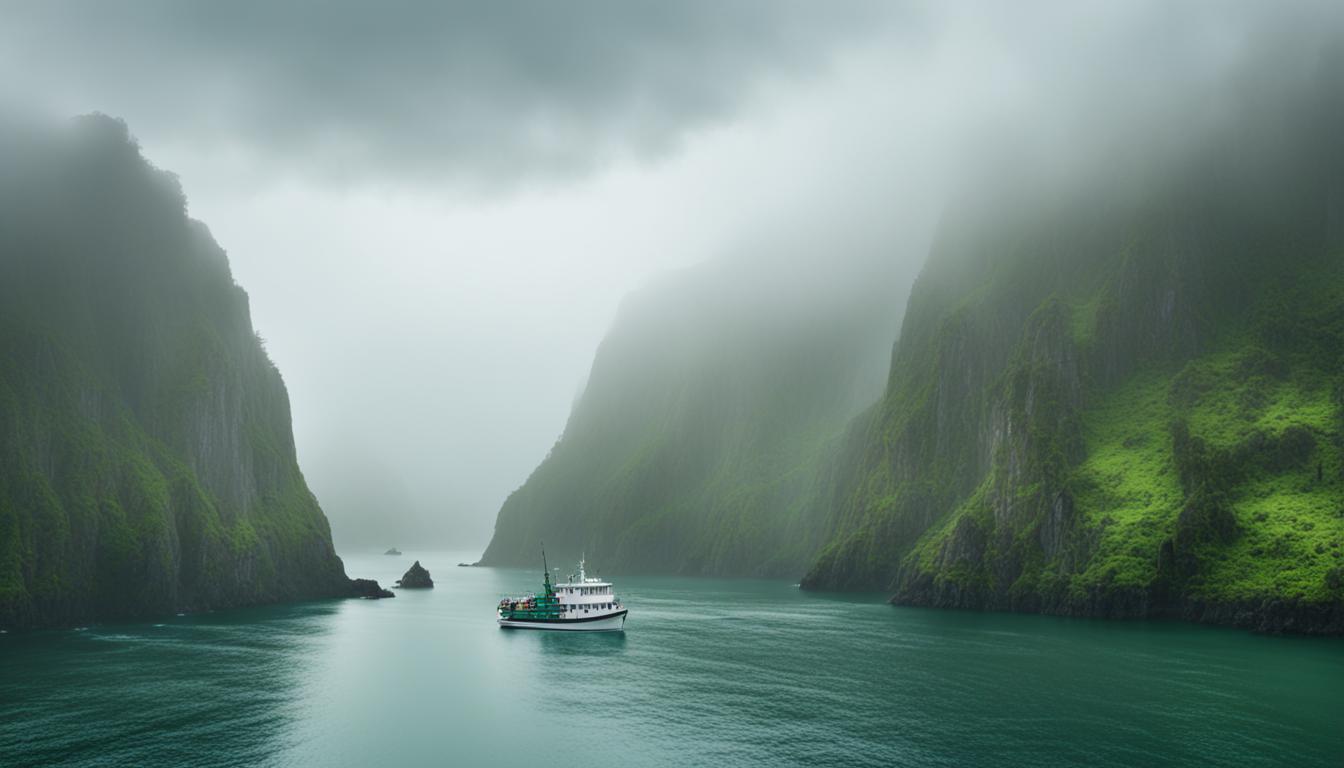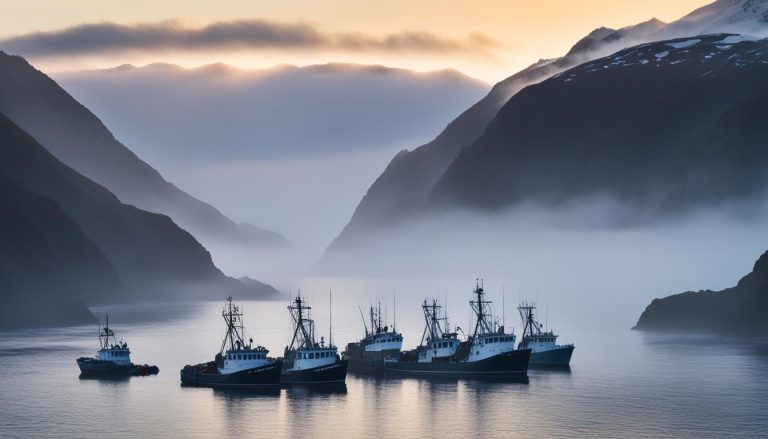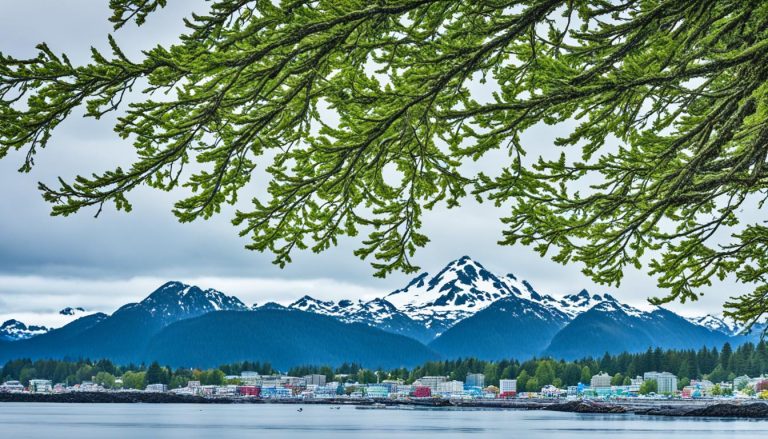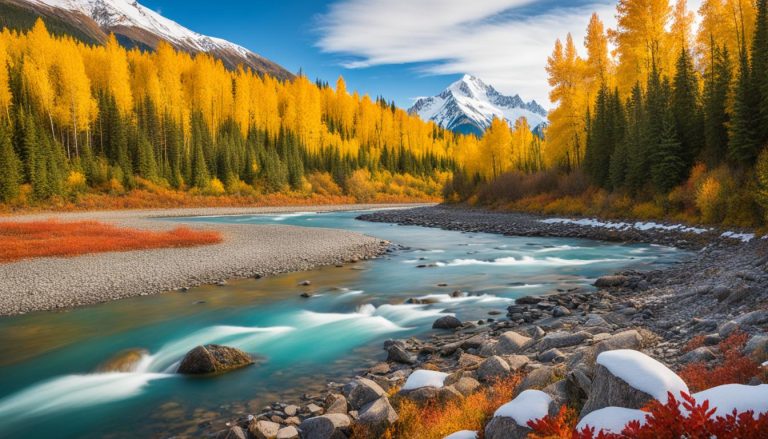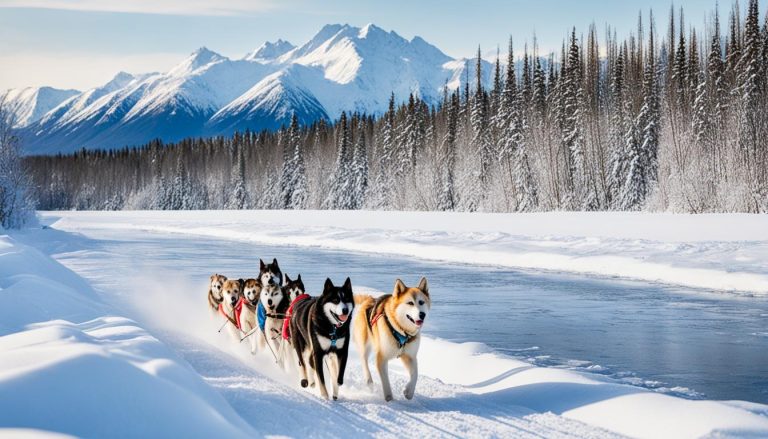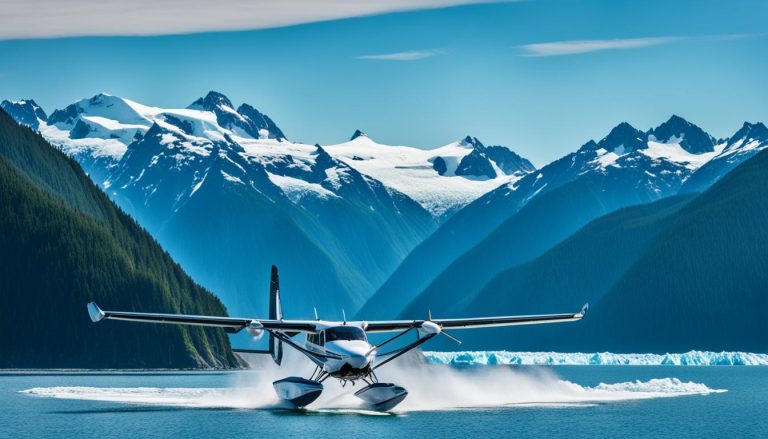Have you ever wondered about the best time to see Ketchikan, Alaska’s natural beauty? It’s a must-visit for anyone who loves beautiful scenery, wildlife, and outdoor fun. But Ketchikan’s weather can be unpredictable. It’s important to choose the right season for your visit.
We will show you the best months to explore Ketchikan, Alaska. We’ll look at the weather, how long the days are, how crowded it gets, and what activities you can do. You’ll learn when the ideal time is for a great trip. This way, you can make unforgettable memories.
Key Takeaways
- Ketchikan’s coastal, temperate rainforest climate brings mild temperatures and high rainfall throughout the year.
- Summer offers the most stable and pleasant weather, but also the busiest and most expensive season.
- The shoulder seasons of spring and fall provide a more relaxed and budget-friendly experience, though with less predictable weather.
- Winter, while challenging, offers unique opportunities for snow sports and the chance to witness the Northern Lights.
- Outdoor activities like hiking, fishing, and wildlife viewing are best during the warmer months, while winter brings opportunities for snow-based adventures.
But, which month is the absolute best for a trip to Ketchikan? Let’s look at how the seasons can affect your Alaskan adventure. We will help you choose the perfect time for the trip of a lifetime.
Understanding Ketchikan's Weather Patterns
Ketchikan, in southeastern Alaska, is famous for its coastal climate and lots of rainfall. It’s nestled in a temperate rainforest. This means it has mild temperatures all year, with average highs between 40°F in winter and 65°F in summer. Its location near the Pacific Ocean keeps the climate in check. This makes it a special place for those looking to enjoy Alaska’s natural beauty.
Coastal Climate and Rainfall
Ketchikan gets a lot of rain, over 150 inches each year. Its spot by the coast and in a temperate rainforest ensures this. The result is a green, lush area filled with different plants and animals.
Temperature Variations Throughout the Year
In Ketchikan, you’ll see big changes in temperature. The warmest time is from June to August, and the coldest is from December to February. During the day, it can be anywhere from the 40s in winter to the 60s in summer. Nights can get pretty cold, reaching the 30s or 20s in winter.
Daylight Hours and Seasonal Changes
Ketchikan is far north, so daylight changes a lot during the year. Summers have the Midnight Sun, with almost 24 hours of daylight. But in winter, days are much shorter, sometimes only 5-6 hours in December and January. These big changes in daylight affect what visitors can do and see.
Summer in Ketchikan (June-August)
Summer is the perfect time for visiting Ketchikan. You’ll find mild temps, little rain, and lots of daylight. This is great for outdoor adventures. Highs reach the 60s in Fahrenheit, perfect for hiking, fishing, and seeing wildlife. During the Midnight Sun time, you have extra hours to enjoy the area.
Yet, summer is also when many people visit, leading to higher prices. This includes rooms, flights, and things to do. If you plan to see popular spots or join tours, book early. This way, you can get a good price and not miss out.
| Activity | Summer Conditions |
|---|---|
| Hiking | Ideal weather, long daylight hours |
| Fishing | Peak season for various salmon species |
| Wildlife Viewing | Greater animal activity and accessibility |
Fall in Ketchikan (September-November)
When summer ends, Ketchikan bursts into a colorful autumn paradise. The area’s deep forests and steep mountains light up with gold, orange, and red. This vivid scene is ideal for outdoor fun like hiking, biking, and simply enjoying nature.
Vibrant Autumn Colors
Ketchikan truly shines with Autumn Colors in the fall. Its trees and hills turn into a brilliant mix of colors. This sight draws many visitors who want to see this beautiful display and enjoy outdoor activities.
Fewer Crowds and Lower Costs
With the Shoulder Season in full swing, Ketchikan sees fewer tourists and lower prices. This is a perfect time for a visit if you like to avoid big crowds and save money. You’ll also notice a quieter, more personal feel in town.
Transitioning Weather Conditions
Ketchikan’s fall weather can be hard to predict but usually stays mild with less rain. It’s a good time for exploring but be ready for changes in weather. Bringing layers and staying flexible will help you enjoy your trip comfortably.
Winter in Ketchikan (December-February)
In Ketchikan, winters bring cold temperatures and a lot of snow. The highs are usually in the 30s and 40s Fahrenheit. But, it can get much colder, dropping to the 20s and 30s. There’s often heavy snow in the mountains near Ketchikan.
Ketchikan’s winter, despite being cold, is great for outdoor fun. You can enjoy skiing, snowshoeing, and ice fishing. The piles of snow and cold make for perfect conditions for these winter sports.
| Winter Activities in Ketchikan | Ideal Months |
|---|---|
| Skiing | December – February |
| Snowshoeing | December – February |
| Ice Fishing | January – February |
The winter in Ketchikan is perfect for winter sports. Whether you love skiing, snowshoeing, or want to try your luck at ice fishing, Ketchikan is ideal. It turns into a magical place during winter.
Spring in Ketchikan (March-May)
As winter’s icy grip weakens, Ketchikan, Alaska, wakes up. It’s the rebirth of nature. The area starts to bloom with new plants, colorful wildflowers, and returning wildlife. It’s a special time to see Ketchikan’s nature wake up.
Rebirth of Nature
Ketchikan in spring is unforgettable. The dull winter turns into a bright world bursting with color. You can see fresh budding on trees, dainty wildflowers popping up, and birds and wildlife coming back.
Unpredictable Weather Patterns
Spring in Ketchikan means new life but also unpredictable weather. Visitors might enjoy sunny days but should expect some rain, wind, or even snow. This kind of weather is typical for the season.
Shoulder Season for Travel
Spring is a shoulder season in Ketchikan. There are fewer tourists and prices are lower than in summer. It’s great for those wanting to avoid crowds and save money on activities.
Ketchikan, Alaska: Best Months for a Weather-Savvy Trip
Ketchikan, Alaska, has the best months to visit depending on what you like and want to do. You might enjoy the summer if you love sunny days. It’s great for outdoor fun but can get really busy and pricey. Spring and fall are not as crowded and more affordable. However, their weather isn’t always steady. For those into snow sports and seeing the Northern Lights, winter poses interesting adventures. The perfect time to go is when it suits your favorite activities and weather.
| Season | Best Months | Weather Conditions | Pros | Cons |
|---|---|---|---|---|
| Summer | June-August | Mild temperatures, low rainfall, long daylight hours | Ideal for outdoor activities, peak tourist season | Higher prices, larger crowds |
| Fall | September-November | Vibrant autumn colors, transitioning weather conditions | Fewer crowds, lower costs, comfortable temperatures | Unpredictable weather |
| Winter | December-February | Cold temperatures, significant snowfall | Opportunities for winter sports, less crowded | Challenging weather conditions |
| Spring | March-May | Unpredictable weather patterns, rebirth of nature | Shoulder season, lower costs, fewer crowds | Variability in weather conditions |
Outdoor Activities and Weather Considerations
Ketchikan is great for outdoor lovers because of its mix of nature and mild weather. The area has many trails like the Deer Mountain and Perseverance Trails for all hiking levels. The best times for hiking and camping are summer and fall. Despite the nice weather, be ready for rain and wind at any time.
Fishing and Wildlife Viewing
Anglers love Ketchikan for its abundance of fish, especially salmon. Late spring to late summer is when King salmon fishing is at its peak. You can also see bears, whales, and many birds during these months as they are out and about more.
Whale Watching and Cruising
If you prefer a laid-back adventure, head to Ketchikan for whale watching and cruising. The best time to see humpback whales is in summer. This is also when cruises that explore the area’s beauty operate, making it a great way to enjoy Ketchikan.
Festivals and Events in Ketchikan
In the summer, Ketchikan’s community is full of life. The Ketchikan Festival happens every July, celebrating the area’s history and culture. You’ll find live music, delicious food, and fun for the whole family there.
The Blueberry Arts Festival is in August. It shows off the area’s tasty blueberries and dishes you can make with them.
Winter Festivals and Activities
Winter in Ketchikan is cold and rainy, but locals love this season too. They have several Winter Festivals and Events. The Wearable Art Show in February is one of them. Here, local talents shine with their creative designs.
In March, the Ketchikan Iceworm Festival takes you into unique winter traditions. There’s ice sculpture carving and stories that share the local culture.
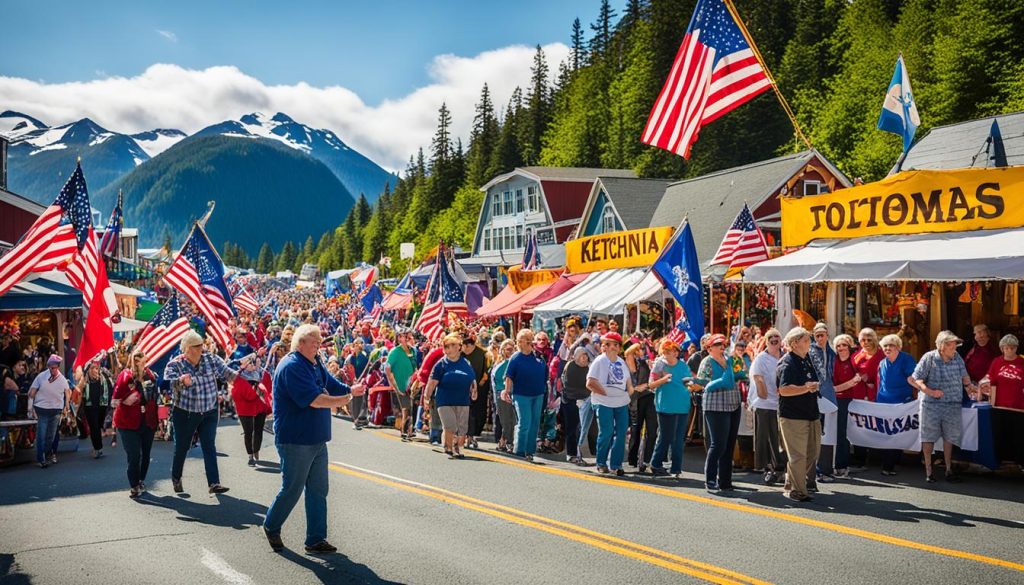
Conclusion
Ketchikan, Alaska, is cool all year. It has lots for travelers to see and do. The best time to visit Ketchikan really depends on what you like.
Each season offers its own weather considerations, outdoor activities, and festivals and events. By picking the right time, you can have an amazing trip in this beautiful Alaskan spot.
Summer is full of fun festivals while autumn shows off its beautiful colors. Winter is for those who love snow sports, and spring marks the beginning of nature’s cycle again. No matter when you choose to go, Ketchikan won’t disappoint.
So, start planning your trip to Ketchikan now. Immerse yourself in its beauty and culture. With a bit of planning, your trip to Alaska will be unforgettable.
